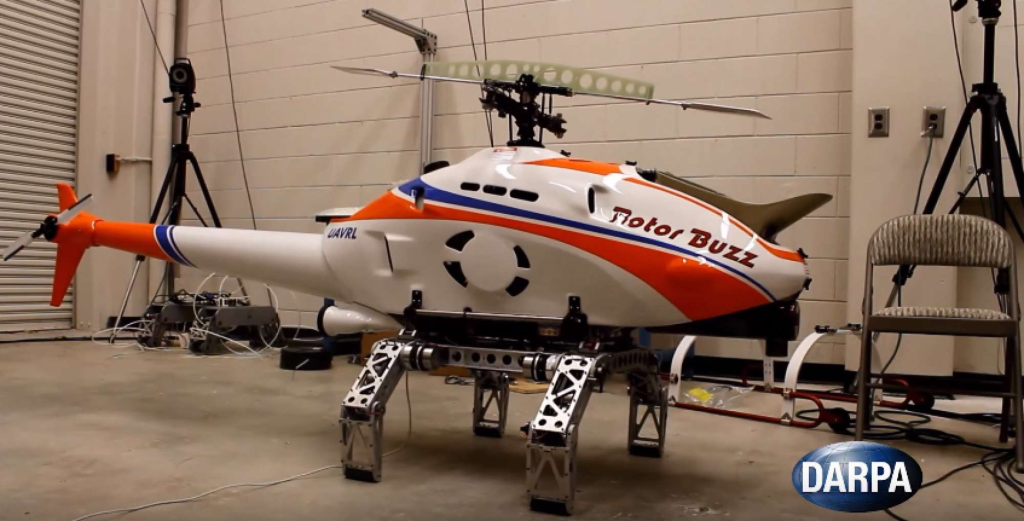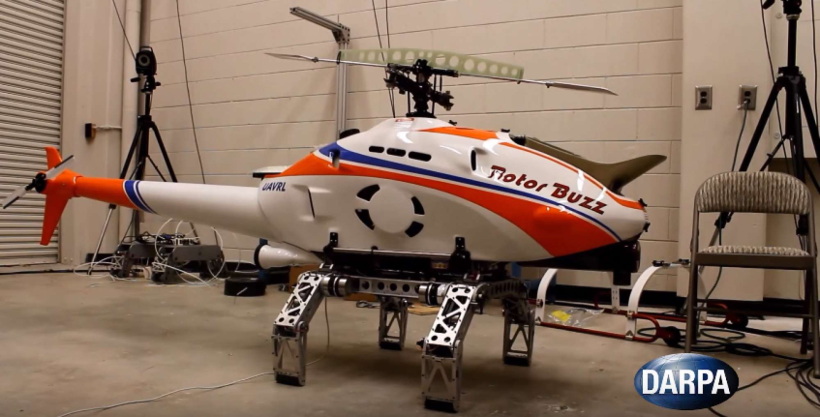
DARPA develops robotic landing gear in a system called Mission Adaptive Rotor (MAR) to allow helicopters to land on and take off from angled, irregular, and moving surfaces. Although helicopters are great for aerial maneuvering, they have a major drawback: they can only land and take off from flat surfaces. This can be a major problem when helicopters are used in natural disaster emergencies and on unstable surfaces (i.e ships). DARPA’s system replaces the old skid and wheel based landing assemblies with four legs containing force sensors. These legs respond to the ground beneath them to ensure that the helicopter (and the rotor) stay level thus preventing catastrophic accidents if the blades touch the ground.
According to Ashish Bagai, the DARPA MAR Program Manager, the system can provide: reduced accidents, successful ship landings, landings and take offs on sloping terrain up to 20 degrees, and all with a small increase in weight.
This kind of technology will not only improve our medical and emergency responders’ ability to get to those in need but also drive down the occurrence of landing and takeoff accidents. Creating a solution to a long time problem…engineering at its finest!
Until next time…

